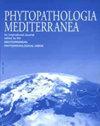Mechanisms of resistance to powdery mildew in cucumber
IF 1.9
3区 农林科学
Q2 AGRONOMY
引用次数: 3
Abstract
Podosphaera xanthii causes powdery mildew of cucumber, and is associated with significant yield and quality losses. Development of resistant or tolerant varieties is the most effective and eco-friendly strategy for powdery mildew management. An important host resistance mechanism is based on the recognition of conserved resistance genes, resulting in durable resistance. To determine powdery mildew resistance mechanisms in cucumber, total RNAs were isolated from the powdery mildew resistant cultivar Meltem, the tolerant line VT18, and the susceptible local variety Camlica. Expression levels of nine genes in these plants were analysed by Reverse Transcription Polymerase Chain Reaction (RT-PCR). The host reactions were assessed using microscope observations of stained specimens. Serine/threonine (STN7), transcription factor (WRKY22), serine/threonine-protein kinase (D6PKL1), and serine/threonine receptor kinase (NFP) genes were induced, as positive regulators in defence mechanisms against powdery mildew. Polygalacturonase Inhibitor (PGIP) did not express after P. xanthii inoculation of Camlica, resulting in susceptibility. After inoculation, callose synthase (CALLOSE) and cinnamyl alcohol dehydrogenase (CAD) gene expression levels were increased in resistant Meltem, but Hypersensitive Reaction (HR) and ROS formation were only linked in the tolerant VT18. Powdery mildew development was less in Meltem than in VT18, indicating that cell wall thickening and HR play separate roles in resistance to this disease.黄瓜对白粉菌的抗性机制
黄球菌引起黄瓜的白粉病,并与显著的产量和质量损失有关。开发抗性或耐受性品种是防治白粉菌最有效、最环保的策略。一个重要的宿主抗性机制是基于对保守抗性基因的识别,从而产生持久的抗性。为了确定黄瓜的抗白粉菌机制,从抗白粉病品种Meltem、耐白粉病品系VT18和感病地方品种Camlica中分离出总RNA。通过逆转录聚合酶链式反应(RT-PCR)分析了9个基因在这些植物中的表达水平。使用染色标本的显微镜观察来评估宿主反应。丝氨酸/苏氨酸(STN7)、转录因子(WRKY22)、丝氨酸/苏苏氨酸蛋白激酶(D6PKL1)和丝氨酸/苏氨酸受体激酶(NFP)基因被诱导,作为防御白粉菌机制的正调控因子。多聚半乳糖醛酸酶抑制剂(PGIP)在黄曲霉接种Camlica后不表达,导致易感性。接种后,愈伤组织合成酶(callose)和肉桂醇脱氢酶(CAD)基因在抗性Meltem中的表达水平增加,但超敏反应(HR)和ROS的形成仅在抗性VT18中相关。与VT18相比,Meltem中的白粉病发生较少,这表明细胞壁增厚和HR在对该疾病的抗性中起着不同的作用。
本文章由计算机程序翻译,如有差异,请以英文原文为准。
求助全文
约1分钟内获得全文
求助全文
来源期刊

Phytopathologia Mediterranea
生物-植物科学
CiteScore
4.40
自引率
8.30%
发文量
28
审稿时长
6-12 weeks
期刊介绍:
Phytopathologia Mediterranea is an international journal edited by the Mediterranean Phytopathological Union. The journal’s mission is the promotion of plant health for Mediterranean crops, climate and regions, safe food production, and the transfer of new knowledge on plant diseases and their sustainable management.
The journal deals with all areas of plant pathology, including etiology, epidemiology, disease control, biochemical and physiological aspects, and utilization of molecular technologies. All types of plant pathogens are covered, including fungi, oomycetes, nematodes, protozoa, bacteria, phytoplasmas, viruses, and viroids. The journal also gives a special attention to research on mycotoxins, biological and integrated management of plant diseases, and the use of natural substances in disease and weed control. The journal focuses on pathology of Mediterranean crops grown throughout the world.
The Editorial Board of Phytopathologia Mediterranea has recently been reorganised, under two Editors-in-Chief and with an increased number of editors.
 求助内容:
求助内容: 应助结果提醒方式:
应助结果提醒方式:


